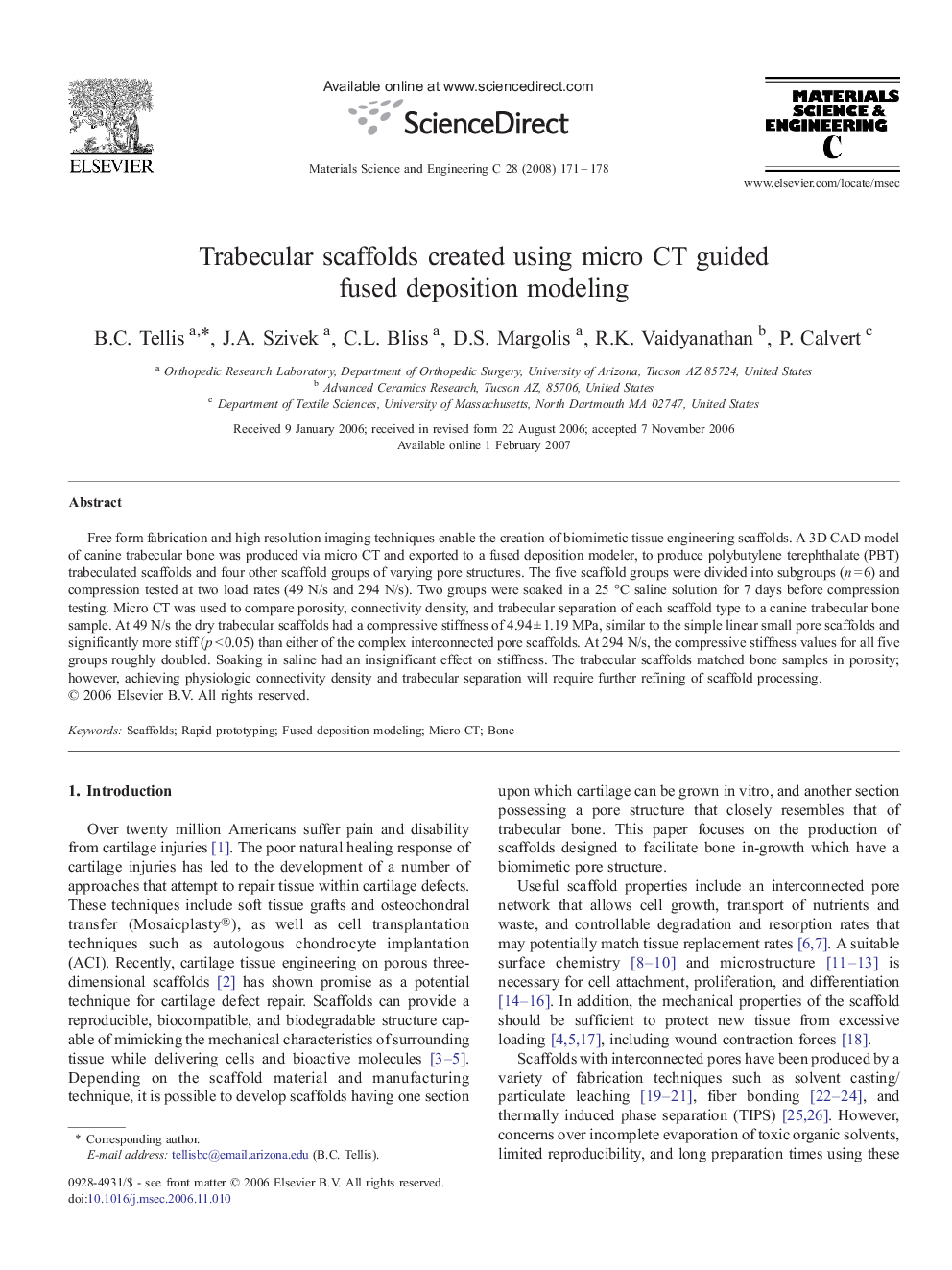| Article ID | Journal | Published Year | Pages | File Type |
|---|---|---|---|---|
| 1430073 | Materials Science and Engineering: C | 2008 | 8 Pages |
Free form fabrication and high resolution imaging techniques enable the creation of biomimetic tissue engineering scaffolds. A 3D CAD model of canine trabecular bone was produced via micro CT and exported to a fused deposition modeler, to produce polybutylene terephthalate (PBT) trabeculated scaffolds and four other scaffold groups of varying pore structures. The five scaffold groups were divided into subgroups (n = 6) and compression tested at two load rates (49 N/s and 294 N/s). Two groups were soaked in a 25 °C saline solution for 7 days before compression testing. Micro CT was used to compare porosity, connectivity density, and trabecular separation of each scaffold type to a canine trabecular bone sample. At 49 N/s the dry trabecular scaffolds had a compressive stiffness of 4.94 ± 1.19 MPa, similar to the simple linear small pore scaffolds and significantly more stiff (p < 0.05) than either of the complex interconnected pore scaffolds. At 294 N/s, the compressive stiffness values for all five groups roughly doubled. Soaking in saline had an insignificant effect on stiffness. The trabecular scaffolds matched bone samples in porosity; however, achieving physiologic connectivity density and trabecular separation will require further refining of scaffold processing.
